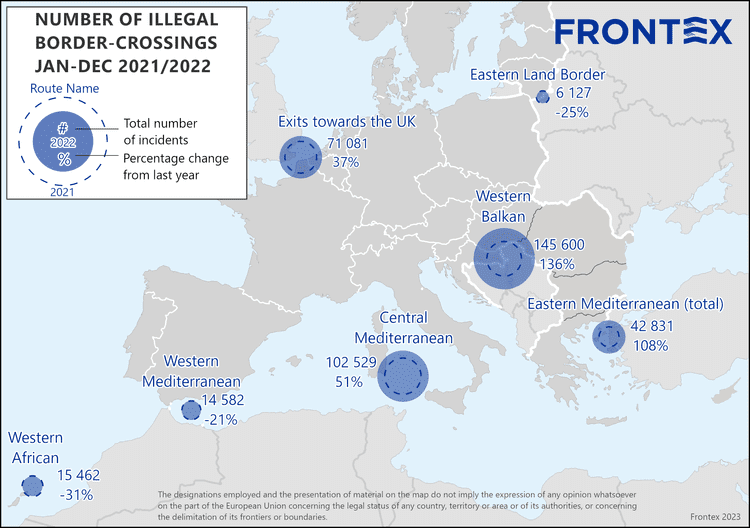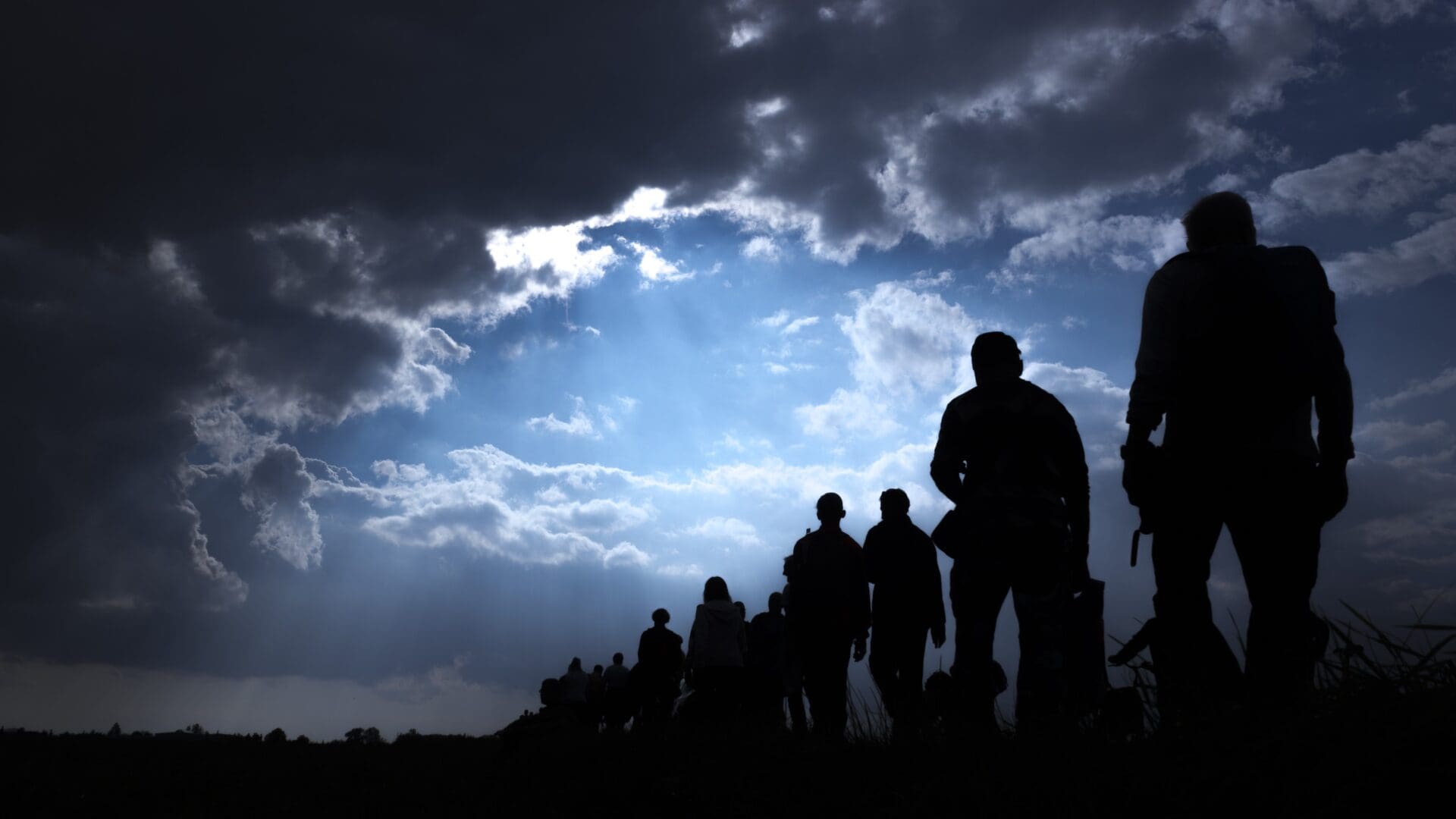The European Border and Coast Guard Agency, Frontex, has recently put out its latest annual report about illegal border crossings. What they found was unnerving. According to their preliminary numbers, 330,000 attempts, both successful and unsuccessful combined, were made to come across the EU’s external borders without proper permission in 2022.
It must be noted that the 13 million Ukrainian refugees who came through Ukraine or Moldova since the start of the Russian invasion of Ukraine on 24 February are not included in these figures.
Those 330,000 reported crossings represent the highest figure since 2016. There was a major dip in 2020, brought on by the Coronavirus pandemic, but those trends have since been reversed. Both 2021 and 2022 saw an increase in illegal migration—with a whopping rise of 64 per cent last year. However, the level is still nowhere near as high as it was in 2015, at the height of the European migration crisis, when nearly 2 million (!) attempts were made to illegally enter the coveted Schengen zone.
In 2022, the Western Balkans were the illegal migrants’ preferred route, with 45 per cent of all attempted crossings, totalling 145,600, originating from there. This is also the region where the biggest increase in illegal migration was detected: a staggering 136 per cent. Second on the list is the Central Mediterranean route with over 100,000 border crossings, and an over 50 per cent increase from last year. As for where these immigrants are coming from, statistics show that their most common country of origin is Syria with 94,000 people (nearly twice as many as in 2021), followed by Afghanistan, then Tunisia.

Since the outbreak of the European migration crisis, we have often heard from those sceptical of the Willkommenskultur of Western European countries that young men peculiarly outnumber women and children in this mass of supposed refugees. After all, if they truly are fleeing from destitution, why aren’t the able-bodied men bringing their families with them? This trend has continued into 2022, with women only making up around ten per cent of the attempted border crossers, while children accounted for an additional nine per cent.
Denmark and the United Kingdom Taking Action
Two weeks ago, Danish Migration and Integration Minister Kaare Dybvad stated that his country is seeking collaboration with other EU member states to transfer asylum seekers outside the Union’s borders. Previously, the Danish government, which has been following a ‘zero migrant’ policy since 2019 (with the exception of Ukrainian refugees fleeing the war), had been in talks with the government of Rwanda to set up a migrant centre there that would house illegal immigrants currently held in Denmark. The two nations even announced the signing of a written partnership in September 2022. However, these negotiations are now halted, as Minister Dybvad noted, until they find common ground with other EU nations.
One nation already following suit is the one already out of the European Union: it is the United Kingdom. Since June 2022, the UK has been relocating illegal immigrants and asylum seekers apprehended at their borders also to the African nation of Rwanda. While the legality of these actions was challenged, His Majesty’s High Court of Justice ultimately found it to be lawful in December 2022. However, this ruling is likely to be challenged in the UK Court of Appeal.








